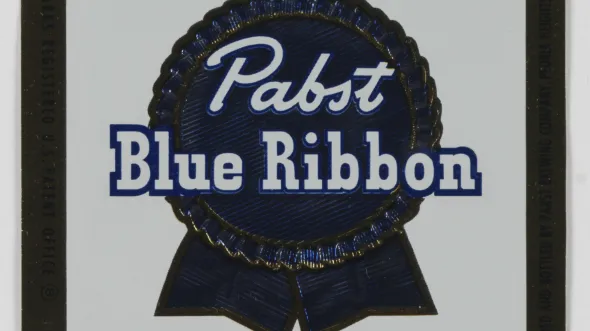For the many archivists working on the Reynolds Metals Records, it’s difficult not to become thirsty when reading through the materials. Granted, Reynolds was involved in more than just producing foil beer labels and aluminum cans, though the labels and cans are some of the most visual interesting of what Reynolds manufactured.
Beverage drinkers everywhere owe Reynolds Metals a debt of gratitude for developing the first pull-tab aluminum can. Reynolds established its Can Division in 1963, and in that same year developed the first all-aluminum, twelve-ounce can. In 1976, Reynolds introduced the “Stay-on-Tab,” which was recognized as a positive alternative to pull-tab litter and as a 100 percent recyclable and litter-reducing beverage container.
The records yield other attention-grabbing artifacts from the history of beverage production: Throughout the collection there are samples of beer labels produced on Reynolds aluminum. It’s interesting to look at them and think how the company’s labels have evolved over time. Sadly, some of the labels in the collection are from beers that are no longer produced today.
There’s also a set of letters in the Reynolds records from David Reynolds to his father, Richard S. Reynolds, Sr., in 1954, discussing the possibility of a technology that would allow beer to be atomically radiated instead of pasteurized to sterilize the beer, which would allow it to retain more of its original flavor. Both were excited that aluminum was the only metal that would withstand the beer-radiating process, and they anticipated great increases in sales of aluminum cans and crowns on bottles. It appears that the radiating practice never got put into wide use, but aluminum beer cans are still ever present to this day. (RSR, Sr. files: David P. Reynolds, 1954)
So, as you enjoy your next aluminum-canned beverage or spend time carefully peeling the foil label off your bottled beer, take a moment and give a cheer to Reynolds Metals.










